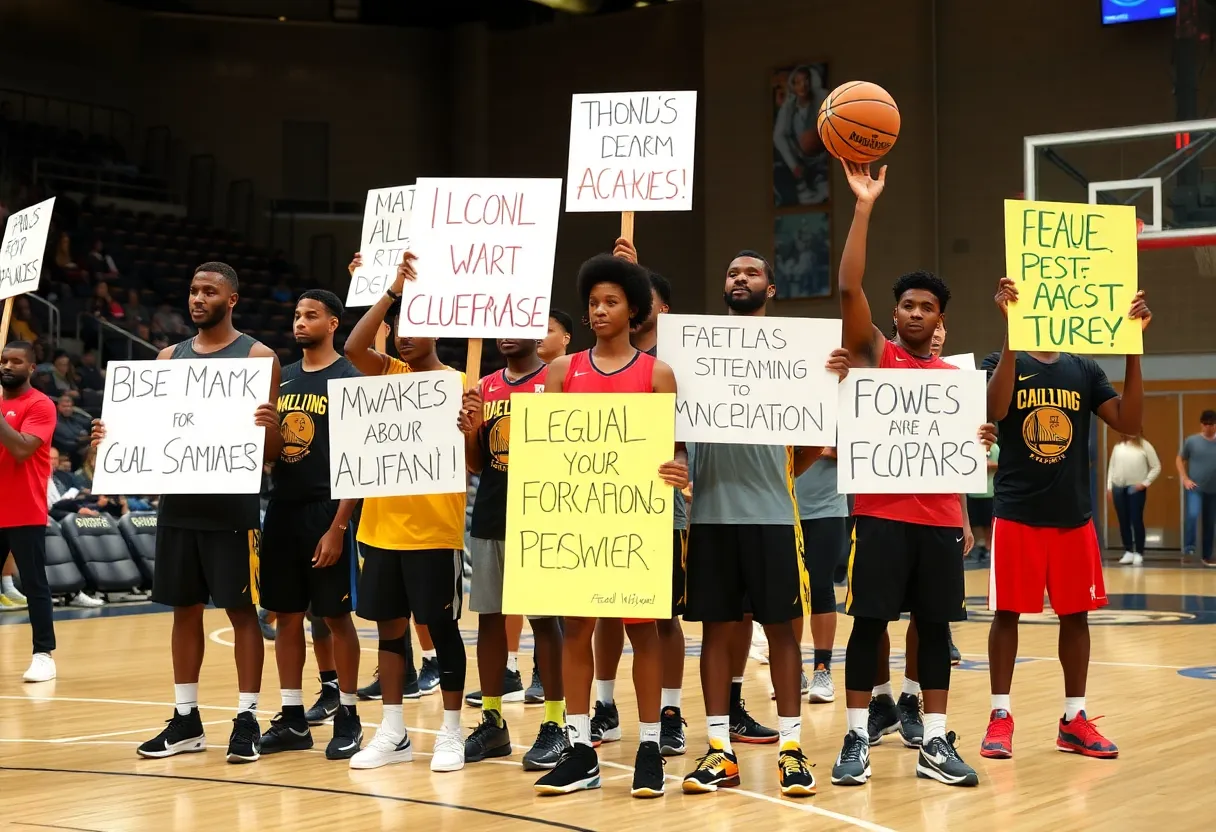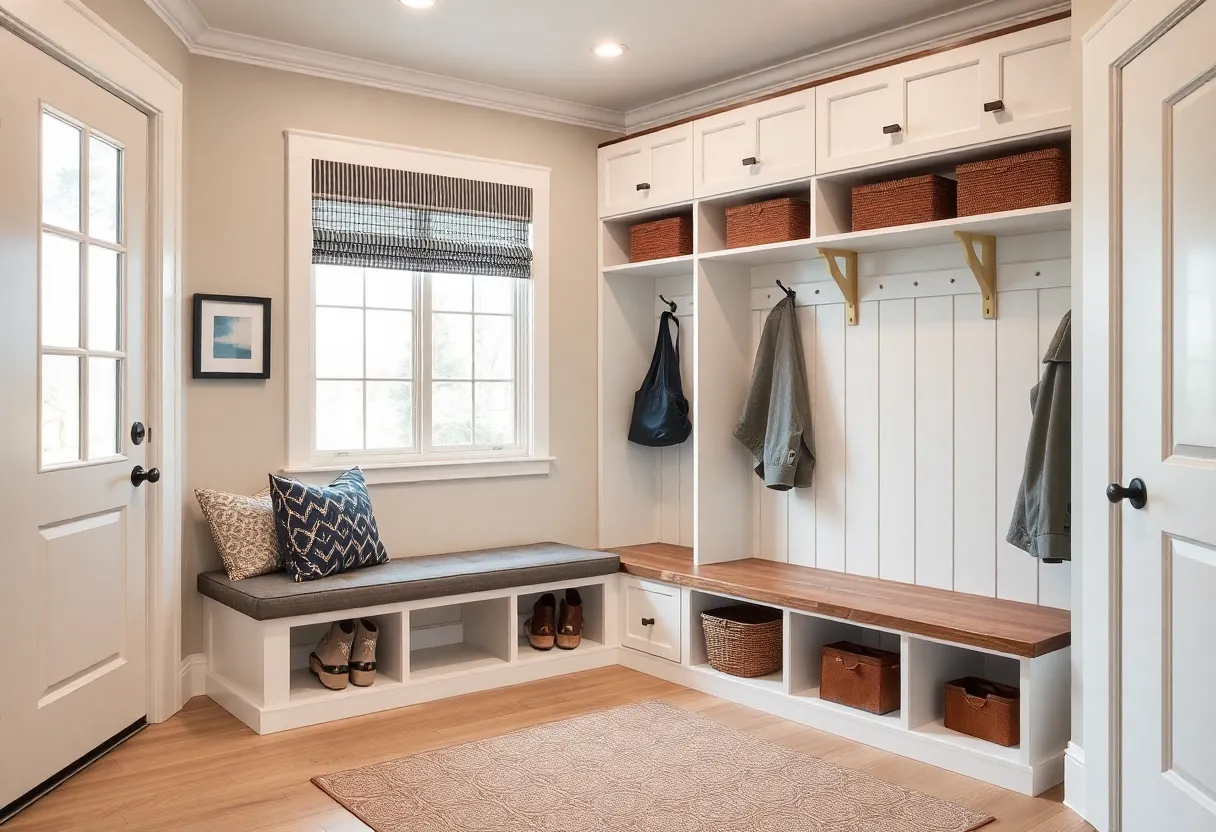News Summary
WNBA players, led by figures like Angel Reese, are pushing for fair salaries as collective bargaining negotiations stall. They are advocating for better pay and equitable revenue sharing, underscored by well-documented protests, including wearing shirts with ‘Pay Us What You Owe Us’ during All-Star events. With current average salaries significantly lower than other major leagues and the threat of a walkout looming, player activism is at an all-time high as they demand an equitable deal that reflects their contributions to the league.
Chicago, IL — WNBA Players Push for Fair Salaries as Negotiations Continue
The ongoing struggle for equitable pay within the Women’s National Basketball Association (WNBA) has reached a critical point as players actively voice their demands amid stalled collective bargaining agreement (CBA) negotiations. Key figures, such as Chicago Sky forward Angel Reese, have become prominent advocates, emphasizing the need for fair compensation and equitable revenue sharing.
Player Activism and Public Demonstrations
Angel Reese has been vocal about the issues surrounding player salaries and the league’s revenue distribution. She previously raised the possibility of a lockout in social media statements and has now reaffirmed the players’ collective resolve to fight for better pay. During the recent All-Star Game, players wore shirts bearing the message “Pay Us What You Owe Us” to protest for higher salaries and improved league funding. This silent demonstration occurred while fans cheered during warmups and MVP announcements, highlighting widespread support from the audience.
Current Negotiation Landscape
The latest round of CBA talks has involved approximately 40 players meeting directly with league officials. While these discussions are described as “constructive” by WNBA commissioner Cathy Engelbert, there remains a recognition that further negotiations are necessary. The players’ strong stance reflects mounting concerns over their financial futures, especially with the possibility of a walkout if a new agreement is not reached by October.
Revenue Shares and League Financials
At the heart of the dispute is the league’s revenue share structure. WNBA players currently receive only a percentage of the league’s “excess revenue,” which is paid out only if certain revenue targets are met. In contrast, other major professional sports leagues, such as Major League Soccer (MLS), allocate 25% of excess revenue to players, while leagues like the NBA, NFL, and NHL distribute between 47% and 51%. This discrepancy means WNBA players generally earn a smaller portion of league earnings, with some receiving less than 10% of the revenue generated.
Salary Comparisons and Economic Challenges
The average salary for a WNBA player stands at approximately $147,745, with current salaries ranging from $66,079 to $249,244. Although these figures have increased over the years, they remain significantly lower than those in other professional leagues. For example, NBA players have a minimum salary exceeding $1.27 million, with the average surpassing $13 million. Similarly, MLS players earn an average of around $594,000.
The league reported a financial loss of $40 million last year, a factor often cited to justify conservative salary increases. Despite this, recent growth indicators include a $2.2 billion media deal and plans to add three new teams, signaling an expanding market for the sport.
Impacts on Player Compensation and League Growth
The disparity between the league’s revenue and player earnings raises concerns about fairness and the long-term sustainability of athlete salaries. Notably, WNBA players receive less than 10% of the league’s revenue, which has prompted criticism from players such as Nneka Ogwumike about the system’s equity and future earning potential.
Efforts to educate players about revenue sharing and financial literacy are ongoing, aiming to strengthen their negotiating position. The growing public support and high-profile protests underscore a broader movement advocating for gender equity in sports compensation.
Looking Ahead
As negotiations continue, the league and players remain engaged in dialogue. WNBA commissioner Cathy Engelbert has acknowledged the need for ongoing discussions and emphasized that the league is committed to reaching a fair agreement. The outcome of these negotiations will not only determine players’ salaries but also influence the future of women’s professional basketball and its economic model.
Deeper Dive: News & Info About This Topic
HERE Resources
Indiana Fever Signs Australian Forward Chloe Bibby
WNBA Players Protest for Fair Salaries During All-Star Game
Additional Resources
- WAPT: WNBA Salaries Compared to Other Leagues
- Newsweek: Angel Reese Sends Clear Message on WNBA Salary Negotiations
- Times of India: ‘We Are Underpaid’ – Stephen Curry Sparks Salary Debate
- New York Times: WNBA CBA Negotiations and Player Salaries
- The Guardian: WNBA Players Say They’re Not Paid What They’re Owed
- Wikipedia: WNBA
- Google Search: WNBA salary negotiations
- Google Scholar: WNBA salary disparities
- Encyclopedia Britannica: Women’s National Basketball Association
- Google News: WNBA salary
Author: STAFF HERE WASHINGTON DC
The WASHINGTON DC STAFF WRITER represents the experienced team at HEREWashingtonDC.com, your go-to source for actionable local news and information in Washington, DC, and beyond. Specializing in "news you can use," we cover essential topics like product reviews for personal and business needs, local business directories, politics, real estate trends, neighborhood insights, and regional news affecting the area—with deep expertise drawn from years of dedicated reporting and strong community input, including local press releases and business updates. We deliver top reporting on high-value events such as the National Cherry Blossom Festival, Kennedy Center Honors, and the Washington Auto Show. Our coverage extends to key organizations like the Greater Washington Board of Trade and Destination DC, plus leading businesses in government contracting and technology that power the local economy such as Lockheed Martin and Amazon. As part of the broader HERE network, we provide comprehensive, credible insights into the dynamic landscape of the Washington metropolitan area.





